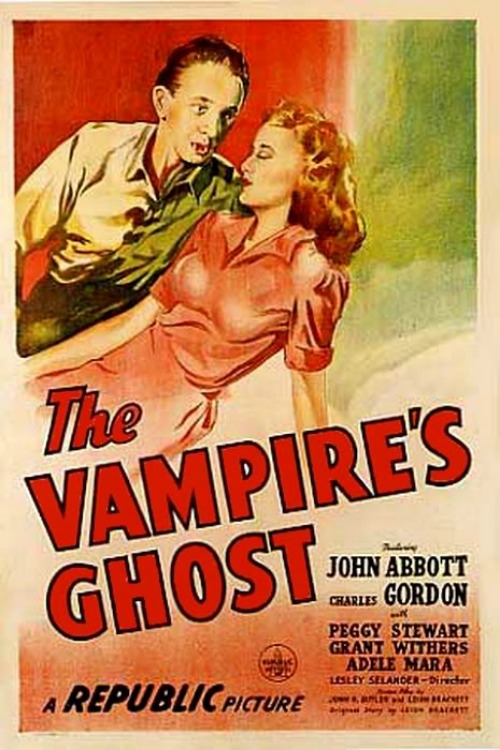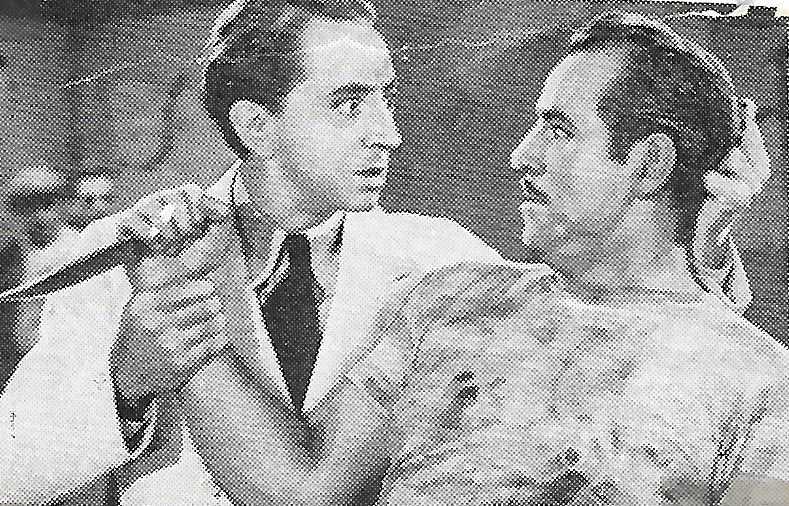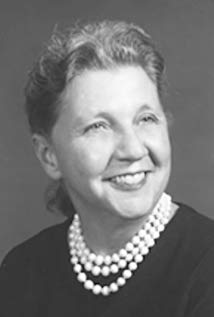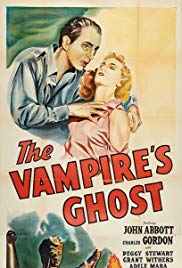The Vampire’s Ghost (1945)
IMDb meta-data is 59 minutes of runtime, rated 6.0 by 301 cinematizens
Genre: Horror
Verdict: Some nice touches

A world weary Bar Owner (BO) in the heart of the Dark (because is little is known about it) Continent in Bakunda on the Unseen River, perhaps, in southern Chad speaks in riddles. We know from the get-go he is…The Vampire. What else could explain his clean clothes, perfect diction, and shy mien.
BO is urbane, European, hyperthyroid, patient, and oblivious of either money or sex. ‘What is wrong this guy, indeed,’ chorused the fraternity brothers! Meanwhile, locals — not the Europeans — are dying from bites in the throat. Got it, so far?
While the six Hollywood Europeans we see, including the studio-contracted woman who has the screaming and fainting duties of the era, stand around, the natives are sure a demon is loose. They use their iDrums to communicate. The Europeans are sure it is an animal and set out to trap it. Fewer return none the wiser.
Meanwhile, we see that the BO can bug his eyes out something incredible, even more than the fraternity brothers do when a professor assigns r-e-a-d-i-n-g! (‘As if!’) When bug-eyed, BO is dangerous.
It takes Hero a while to figure it out and then he falls sway to the bug-eyes himself. His will is so weak he might have been acting the part written for the screamer. That is nice since it is usually the woman who succumbs, though to be unfair she, too, does later but Hero was first to go all silly putty.
There is a neat shot when we, along with the native servant, see the tea cup in the mirror but not BO’s hand holding it. Though surprised Native does not go all stereotype but instead begins to realise well before the Europeans what has to be done, namely calling Buffy! This is another nice touch endowing the black servant with wit, self-control, and insight. Credit the writer for this touch.

Another very noir scene has BO’s shadow following a minor ruffian and encompassing him as he — BO — has a bite to drink. This is the first European to get it. Had this scene been in an A-film, it would be studied in film schools for the superb staging. Credit the director for this touch.
BO plays his role as the life-weary (ghost) vampire straight with no melodrama, if anything it is under-acted, and the more effective for it. Credit the actor for this touch.
The natives are shown to be well ahead of the Europeans in sussing the deal and acting against it, however Africa is presented as a sensational mash-up of witchcraft, voodoo, Buddhism, Hinduism, and Bunkimism, rather like an ABC news report.

The screenplay was a rarity of 1940s Hollywood: written by a woman, Leigh Brackett, who also wrote the Big Sleep (1946), Rio Bravo (1959), Hatari! (1962), and Stars Wars (1980), and many episodes of The Rockford Files. She also published a host of Sy Fy short stories, and was married to Captain Future himself, Edmond Hamilton.
The gaunt and ever morose John Abbott played the Ghostly Vampire BO with measured ennui. He did many television program and will be recognised by viewers without knowing his name. He was delightful as the embezzling Shakespeare quoting Studio Head in The Falcon in Hollywood (1944). Despite a mien of MittelEuropa he was born Albert Chamberlain Kefford in Kensington, London England and worked in the British Embassy in Moscow during World War II before landing in Hollywood. Regrettably his service in Moscow haunted him later when the real Monster of Hollywood HUAC went looking for cheap headlines and he was blacklisted for a time.
This film was released on 21 May 1945 in the middle of the Typhoon of Steel on Okinawa which saw 75,000 American casualties on this tiny island. The Japanese losses were equal if not even greater. That action was taken to indicate what an invasion of Japan would be like. Beyond hyperbole.

